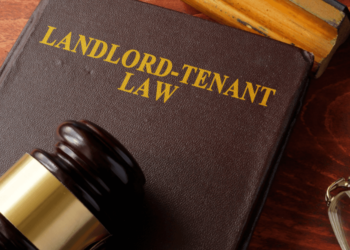Robert Burns might as well have been writing about commercial leases. Commercial landlords and tenants can spend months negotiating and drafting comprehensive written lease agreements. No matter how much effort the parties and their attorneys invest in the contracting process, disputes often arise down the road. The following are common problems with commercial leases that can lead to litigation and tips to avoid those problems.
UNENFORCEABLE TERMS
“Agreements to agree” and “agreements to negotiate” are unenforceable under Minnesota law. Parties must agree on all material terms to have an enforceable contract. In the commercial lease context, enforceability can be a problem with respect to options to continue the lease aft er its initial term expires. Lease options fall into two categories – options to extend and options to renew.
An option to extend continues the lease on the same terms. An option to extend is enforceable. An option to renew, on the other hand, provides that different terms will apply to the renewal period. An option to renew is unenforceable unless the parties agree to the renewal period terms at the time they enter into the lease.
Merely using the words “option to extend” is not enough to create an enforceable option. For the option to be enforceable, the lease must clearly state what the terms of the lease will be once the option is exercised.
OMITTED TERMS
It is not possible for lease drafters to anticipate and include a provision for every single issue that may occur in the future. Still, some omissions are more glaring than others.
In one case, our client’s lease stated that after the initial lease term, rent would be calculated as shown “above.” But there was no rent calculation “above.” The term was simply missing. Most likely, the parties intended to have a rent calculation “above,” but it slipped through the cracks during the drafting process. When drafters add words to and delete words from a lease, they should make sure their revisions do not leave any gaping holes in the contract.
INCONSISTENT TERMS
Inconsistent and irreconcilable lease provisions are fertile ground for litigation. Parties can mitigate the risk of inconsistencies by limiting the number of terms that address a certain issue. The more provisions a lease has that refer to a subject, the more likely it is that the provisions will overlap and support conflicting interpretations.
Parties can also avoid inconsistencies by using clear and accurate cross-references. Proper cross-references can make it easier to see the relationship between various clauses (i.e., “Except as provided in Section X … ” or “In addition to the terms set forth in Section X … ”).
Poor use of cross-references, however, can create an even bigger mess. As a lease is revised, section numbers can change. The parties should consider how changing or moving one term might affect the remainder of the agreement. Before finalizing the lease, parties must carefully review all cross-references to ensure they refer to the correct section numbers.
LOOSE TERMS
It is hard to fight over lease terms that are specific and precise. Litigation is more likely when terms are loose. For example, the word “reasonable” is supposed to provide an objective standard, and people know what the word means in the abstract. But if asked whether a given action is “reasonable,” parties may disagree. That is how lawsuits happen. Whenever possible, lease drafters should eliminate nebulous words in favor of precise terms that leave no room for debate.
TERMS WITH UNINTENDED CONSEQUENCES
Lease terms can have unanticipated consequences if circumstances change over the course of the lease. Landlords and tenants do not have a crystal ball, but if they are contemplating a longterm lease, they should do their best to consider how the lease might work in different scenarios that could occur. What if all other tenants vacate? What if the building is remodeled? What if the city puts a new bus stop right in front of a tenant’s restaurant? The parties should ask themselves those sorts of questions when they draft the lease.
All commercial leases – just like all people who negotiate, draft, sign and enforce them – are imperfect. Even the “best-laid schemes” of landlords and tenants “often go awry.” But problems are far less likely to occur when the parties take care to draft clear, complete and consistent lease agreements.
Phil Kaplan







